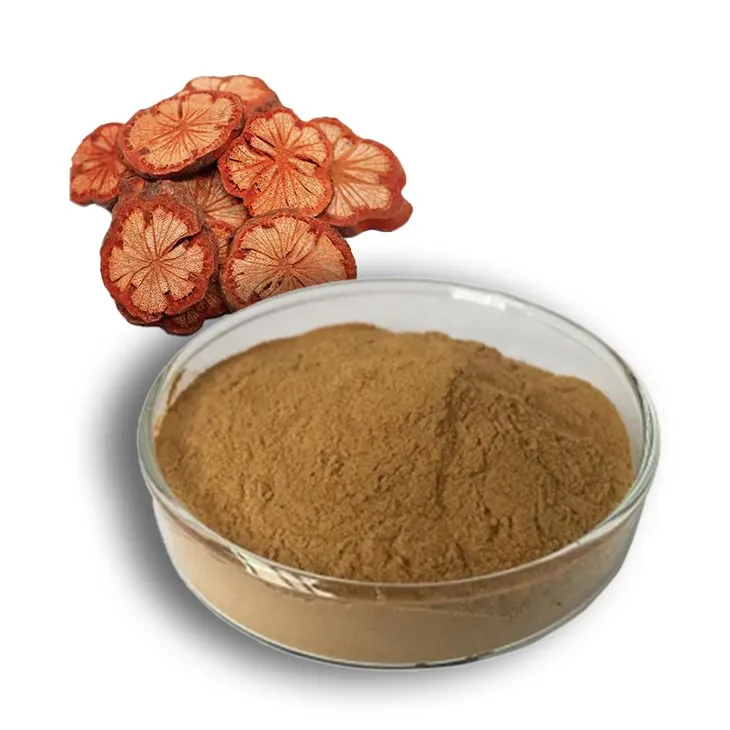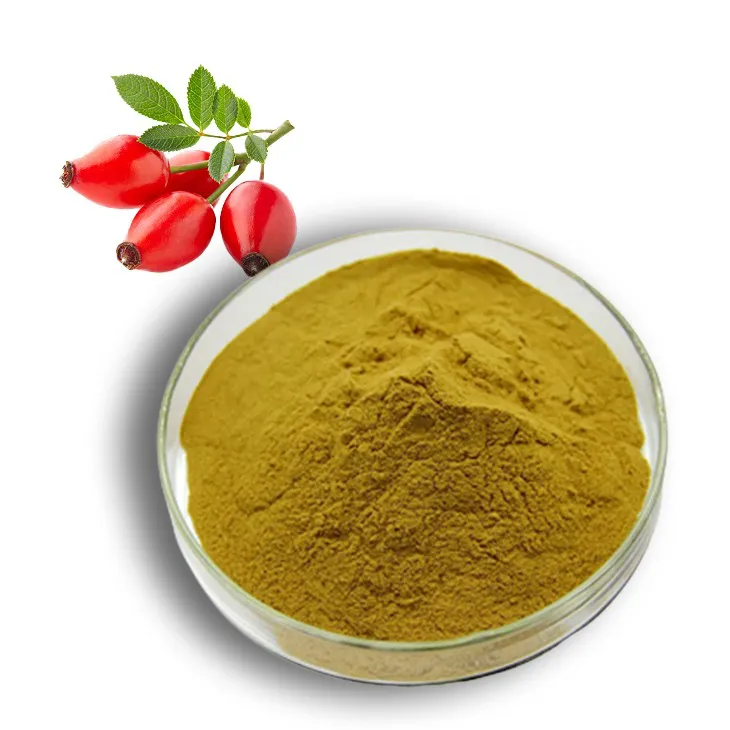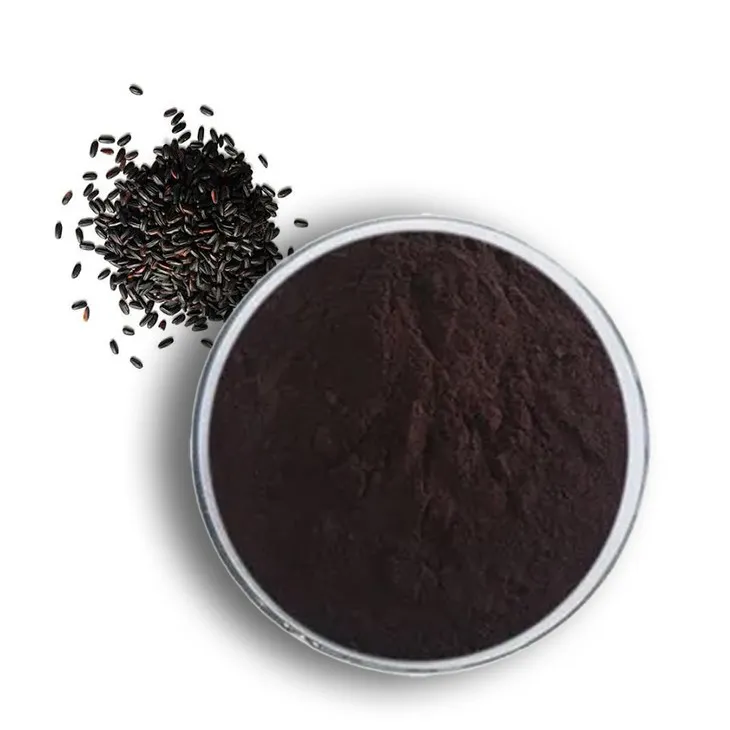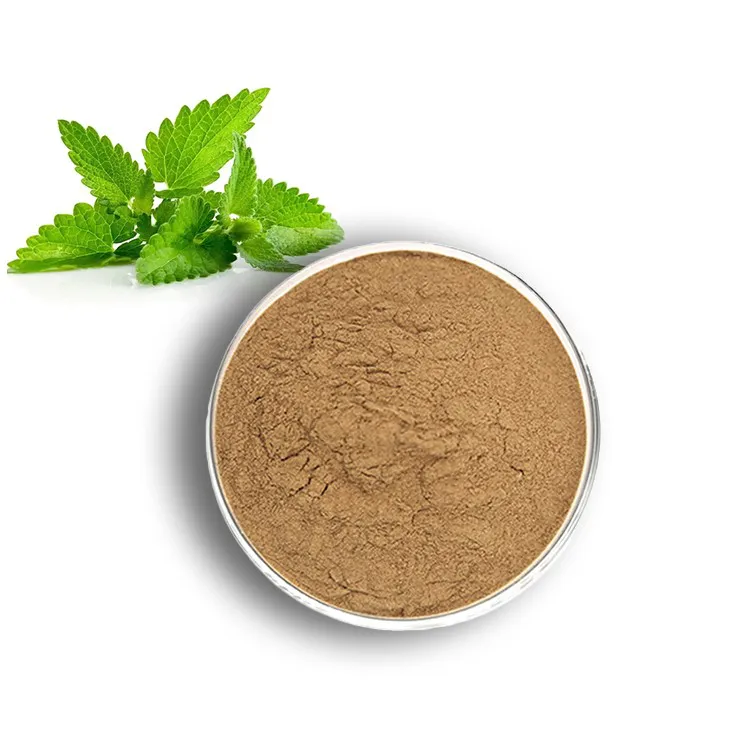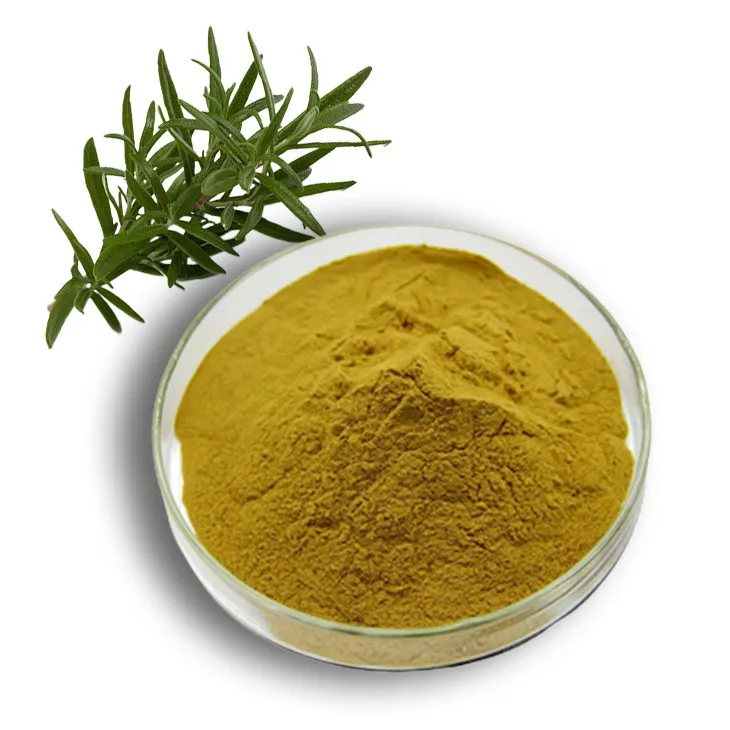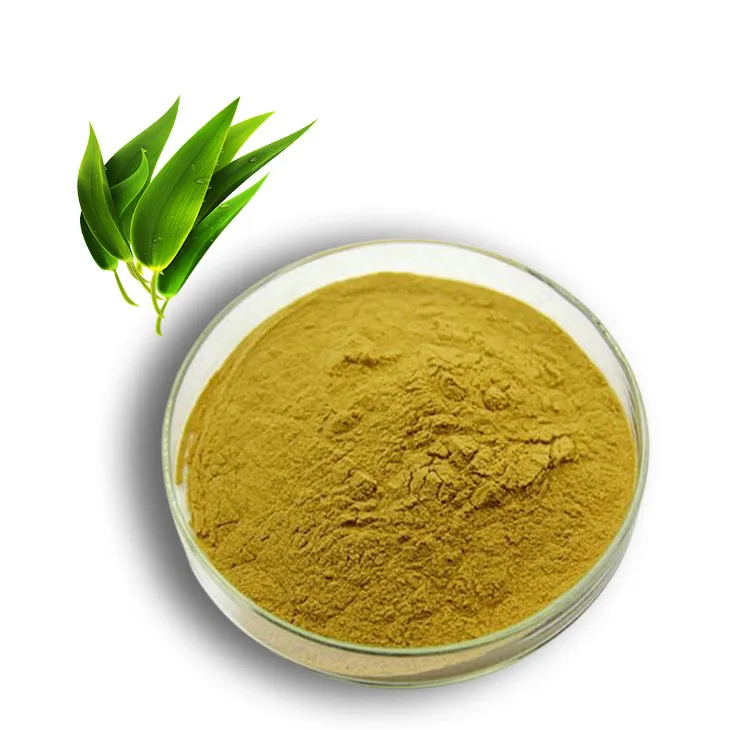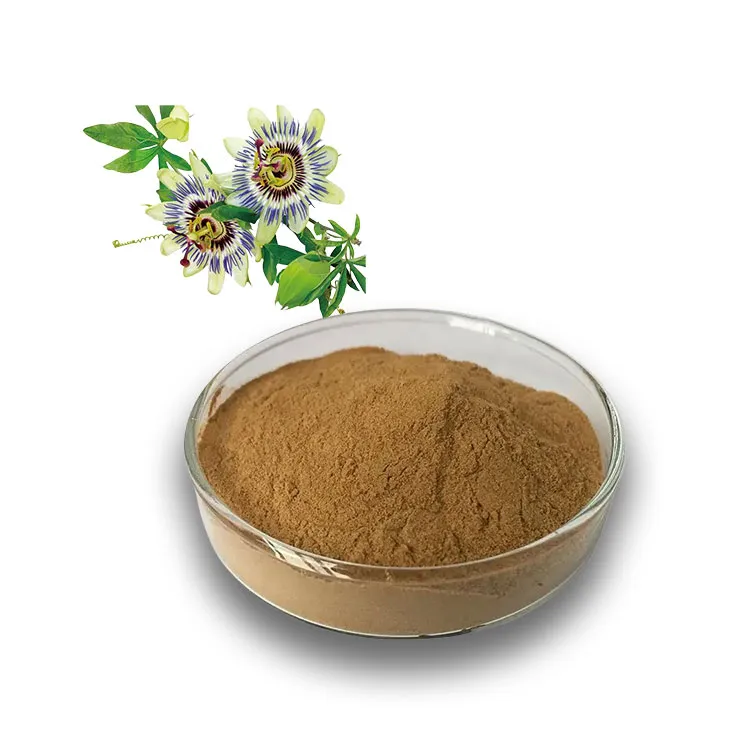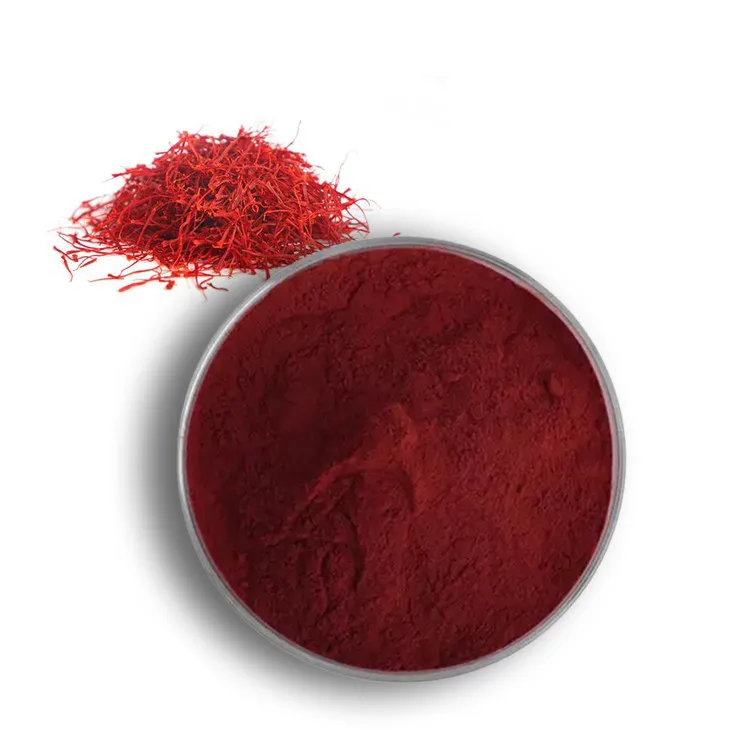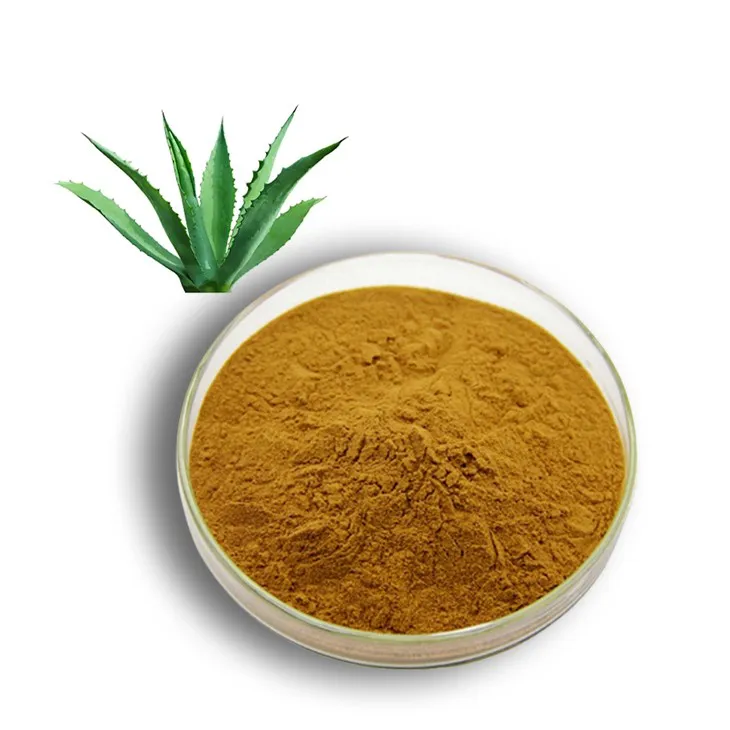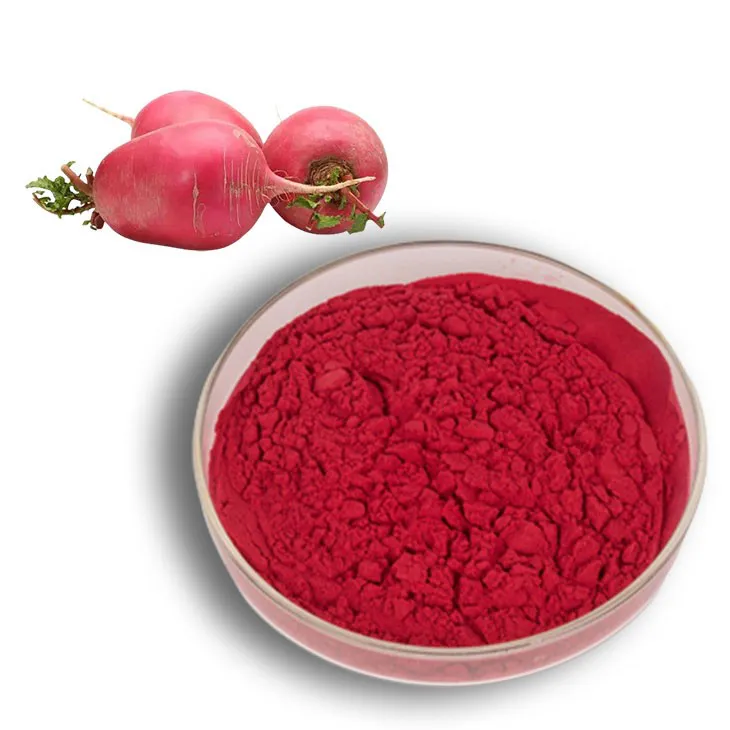- 0086-571-85302990
- sales@greenskybio.com
Natural Healing Uncovered: A Comprehensive Look at White Willow Bark Extract
2024-07-04
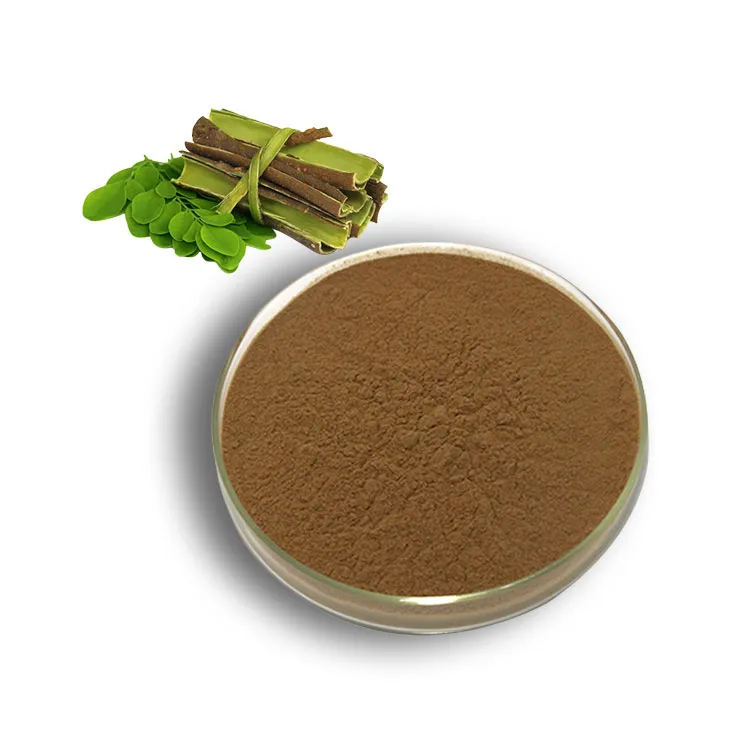
1. Historical Usage of White Willow Bark
1. Historical Usage of White Willow Bark
The use of White Willow Bark (Salix alba) dates back thousands of years, with its origins in ancient civilizations that recognized the plant's medicinal properties. This section will explore the historical usage of White Willow Bark, from its early beginnings to its integration into modern medicine.
1.1 Ancient Civilizations
White Willow Bark has been used for centuries by various ancient civilizations for its therapeutic effects. The ancient Sumerians, Egyptians, and Assyrians were among the first to document its use for pain relief and fever reduction. They recognized the bark's ability to alleviate discomfort and reduce inflammation, making it a staple in their medicinal practices.
1.2 Greek and Roman Medicine
The Greeks and Romans further expanded on the use of White Willow Bark in their medical practices. Hippocrates, known as the "Father of Medicine," is said to have used the bark to treat a variety of ailments, including headaches, joint pain, and fever. The Romans also used it as a remedy for digestive issues and to soothe skin conditions.
1.3 Traditional Chinese Medicine
In Traditional Chinese Medicine (TCM), White Willow Bark has been used for over 2,000 years. It is considered a cooling and nourishing herb, used to treat fever, reduce inflammation, and alleviate pain. TCM practitioners often combine it with other herbs to create formulas that target specific health issues.
1.4 Middle Ages and Renaissance
During the Middle Ages and the Renaissance, White Willow Bark continued to be a popular remedy for pain and fever. It was used by herbalists and physicians alike, who recognized its effectiveness in treating a range of conditions, from toothaches to menstrual cramps.
1.5 19th Century and the Discovery of Salicin
In the 19th century, scientists began to study the chemical composition of White Willow Bark and discovered salicin, a compound that is the precursor to salicylic acid. This discovery led to the development of aspirin, a synthetic form of salicylic acid, which became widely used as a pain reliever and anti-inflammatory medication.
1.6 Modern Usage
Today, White Willow Bark is still used in various forms, including teas, tinctures, capsules, and topical creams. It is recognized for its natural pain-relieving and anti-inflammatory properties, making it a popular alternative to synthetic medications for those seeking a more natural approach to health and wellness.
In conclusion, the historical usage of White Willow Bark spans across different cultures and time periods, highlighting its enduring value as a natural remedy. Its rich history and continued use today underscore the importance of exploring and understanding the medicinal properties of plants in our quest for better health.
2. Botanical Composition and Active Ingredients
2. Botanical Composition and Active Ingredients
White willow bark, derived from the Salix alba tree, has been revered for its medicinal properties for centuries. The botanical composition of white willow bark is rich in a variety of compounds that contribute to its therapeutic effects. Here, we delve into the key components and active ingredients that make this natural remedy so potent.
Salicylic Acid: One of the primary active ingredients in white willow bark is salicylic acid, which is a precursor to the modern drug aspirin. Salicylic acid has anti-inflammatory and analgesic properties that help to reduce pain and inflammation.
Tannins: Tannins are naturally occurring polyphenols that are found in many plants, including white willow bark. They have astringent properties and are known for their ability to tighten and tone the skin and mucous membranes.
Flavonoids: Flavonoids are a group of plant-based compounds that have antioxidant and anti-inflammatory properties. They help to protect the body from oxidative stress and may contribute to the overall health benefits of white willow bark.
Polysaccharides: These are complex carbohydrates that can have a range of health benefits, including immune modulation and potential anti-tumor activity.
Saponins: Saponins are natural foaming agents that can help to stimulate the immune system and have anti-inflammatory effects.
Coumarins: These are organic compounds that have a variety of biological activities, including anti-inflammatory and anticoagulant properties.
Ethanol: In some extraction methods, ethanol is used to extract the active ingredients from the white willow bark. It is a solvent that helps to dissolve the compounds, making them more readily available for use.
Methyl Salicylate: This is another salicylate found in white willow bark, similar to salicylic acid, and contributes to the bark's pain-relieving properties.
The synergistic action of these active ingredients is what gives white willow bark its wide range of health benefits. From its traditional use as a natural pain reliever to its modern applications in herbal medicine, the botanical composition of white willow bark continues to be a subject of interest for researchers and practitioners alike. Understanding the specific roles of these compounds can help in optimizing the use of White Willow Bark Extract for various health conditions.
3. Health Benefits and Medicinal Properties
3. Health Benefits and Medicinal Properties
White Willow Bark Extract has been revered for its health benefits and medicinal properties for centuries. Its therapeutic effects are attributed to the presence of various bioactive compounds, primarily salicin, which is a natural precursor to salicylic acid. Here are some of the key health benefits and medicinal properties associated with White Willow Bark Extract:
3.1 Anti-Inflammatory Properties
One of the most well-known benefits of White Willow Bark Extract is its anti-inflammatory action. The salicin it contains is metabolized into salicylic acid in the body, which is similar to the active ingredient in aspirin. This makes it effective in reducing inflammation and alleviating pain associated with conditions such as arthritis, tendonitis, and other inflammatory disorders.
3.2 Analgesic Effects
As a natural analgesic, White Willow Bark Extract can help relieve mild to moderate pain. It works by inhibiting the production of prostaglandins, which are chemicals that cause inflammation and pain. This makes it a popular alternative to over-the-counter pain relievers for individuals seeking a more natural approach to pain management.
3.3 Antioxidant Activity
The extract is also rich in antioxidants, which help protect the body from oxidative stress caused by free radicals. Antioxidants are essential for maintaining overall health and may help prevent chronic diseases associated with oxidative damage, such as heart disease and cancer.
3.4 Antipyretic Action
White Willow Bark Extract has the ability to reduce fever by lowering body temperature. This is particularly useful for individuals suffering from fevers due to infections or other illnesses.
3.5 Gastrointestinal Benefits
Some studies suggest that White Willow Bark Extract may have a soothing effect on the gastrointestinal tract, potentially helping with conditions like indigestion, heartburn, and stomach ulcers. However, more research is needed to confirm these effects.
3.6 Antimicrobial Properties
The extract has also shown antimicrobial activity, which can help fight against bacterial and fungal infections. This makes it a potential candidate for use in natural remedies for skin conditions and other infections.
3.7 Menstrual Pain Relief
For women, White Willow Bark Extract may provide relief from menstrual cramps and discomfort. Its anti-inflammatory and analgesic properties can help reduce the pain associated with menstruation.
3.8 Potential Anti-cancer Properties
While research is still in the early stages, some studies have suggested that certain compounds in White Willow Bark Extract may have anti-cancer properties. These compounds may help inhibit the growth of cancer cells and reduce the risk of certain types of cancer.
In summary, White Willow Bark Extract offers a wide range of health benefits and medicinal properties, making it a valuable natural remedy for various ailments. However, it is important to consult with a healthcare professional before using it, especially if you are pregnant, breastfeeding, or taking other medications.
4. Common Uses and Applications
4. Common Uses and Applications
White Willow Bark Extract has been widely used for centuries across various cultures for its medicinal properties. Here are some of the common uses and applications of this natural remedy:
1. Pain Relief: One of the primary uses of White Willow Bark Extract is as a natural pain reliever. It is often used to alleviate mild to moderate pain, such as headaches, menstrual cramps, and joint pain.
2. Fever Reduction: The extract has antipyretic properties, which means it can help reduce fever by lowering body temperature.
3. Anti-Inflammatory: Due to its anti-inflammatory components, White Willow Bark Extract is used to soothe inflammation in conditions like arthritis and other inflammatory disorders.
4. Digestive Issues: It has been traditionally used to treat digestive problems such as indigestion, stomach aches, and diarrhea.
5. Skin Care: The extract is used topically for skin conditions like acne, eczema, and other inflammatory skin diseases due to its anti-inflammatory and soothing properties.
6. Mouth and Throat Soother: It can be used as a gargle to soothe sore throats and mouth ulcers.
7. Menstrual Ailments: Women have used White Willow Bark Extract to alleviate the discomfort associated with menstrual cramps and to regulate menstrual flow.
8. Muscle Relaxant: It is sometimes used to help relax muscles and reduce muscle spasms.
9. Tea Blends: White Willow Bark Extract is often an ingredient in herbal teas, which are consumed for their calming and health-promoting effects.
10. Supplements: It is available in various forms such as capsules, tablets, and powders, which are taken as dietary supplements for general well-being and specific health concerns.
11. Topical Creams and Ointments: The extract is incorporated into creams and ointments for localized pain relief and skin care.
12. In Traditional Medicine: It continues to be a staple in traditional and herbal medicine practices around the world.
These applications highlight the versatility of White Willow Bark Extract as a natural remedy for a variety of ailments. However, it's important to consult with a healthcare professional before using it, especially if you are pregnant, breastfeeding, or have any pre-existing health conditions.
5. Research and Scientific Evidence
5. Research and Scientific Evidence
The therapeutic potential of White Willow Bark Extract has been the subject of numerous scientific studies, which have sought to validate its traditional uses and uncover the mechanisms behind its health benefits. Here's a summary of some key research findings and scientific evidence supporting the use of White Willow Bark Extract:
1. Anti-Inflammatory Properties: Research has shown that salicin, the primary active ingredient in White Willow Bark, is metabolized in the body to produce salicylic acid, a compound known for its anti-inflammatory effects. Studies have indicated that this compound can help reduce inflammation and alleviate pain, similar to the way aspirin works.
2. Analgesic Effects: Several clinical trials have demonstrated the analgesic (pain-relieving) effects of White Willow Bark Extract. It has been found to be effective in reducing mild to moderate pain, such as headaches, menstrual cramps, and joint pain, without the gastrointestinal side effects often associated with NSAIDs.
3. Antipyretic Action: White Willow Bark has been studied for its ability to reduce fever. The antipyretic properties are attributed to its ability to lower body temperature by affecting the hypothalamus, which regulates temperature control.
4. Gastrointestinal Protection: Unlike many NSAIDs, which can cause gastrointestinal irritation and ulcers, White Willow Bark Extract has been shown in some studies to have a protective effect on the stomach lining. This is due to the presence of other compounds in the bark that may help to soothe and protect the digestive system.
5. Antimicrobial Activity: Some research suggests that White Willow Bark Extract has antimicrobial properties, which can be beneficial in treating certain bacterial infections. The extract has shown activity against some strains of bacteria, including Staphylococcus aureus.
6. Antiviral Properties: There is preliminary evidence that components of White Willow Bark may have antiviral activity, potentially useful in managing viral infections. However, more research is needed to confirm these findings and understand the full scope of its antiviral potential.
7. Safety in Long-Term Use: Studies have indicated that White Willow Bark Extract may be a safer alternative to long-term NSAID use, particularly for individuals with a history of gastrointestinal issues or those at risk of developing complications from NSAIDs.
8. Interactions with Other Medications: Research has also explored the potential interactions between White Willow Bark Extract and other medications. It is important to note that, like aspirin, it may interact with blood-thinning drugs and should be used with caution by individuals taking such medications.
It's important to note that while these findings are promising, more extensive research is needed to fully understand the mechanisms of action and the extent of the health benefits of White Willow Bark Extract. Additionally, the quality and concentration of active ingredients can vary between different products, which may affect the efficacy and safety of the extract.
6. How to Use White Willow Bark Extract
6. How to Use White Willow Bark Extract
White Willow Bark Extract can be utilized in a variety of ways to take advantage of its health benefits and medicinal properties. Here are some common methods of using White Willow Bark Extract:
6.1. Oral Consumption
The most common method of using White Willow Bark Extract is through oral consumption. It is available in the form of capsules, tablets, and liquid extracts. When taking White Willow Bark Extract orally, it is important to follow the recommended dosage provided by the manufacturer or a healthcare professional. The typical dosage ranges from 60 to 120 mg of salicin per day, but this can vary depending on the individual's needs and the specific product being used.
6.2. Topical Application
White Willow Bark Extract can also be applied topically to help alleviate pain and inflammation in localized areas. It is often found in creams, ointments, and balms that can be applied directly to the skin. When using White Willow Bark Extract topically, it is important to follow the instructions provided on the product label or consult with a healthcare professional for guidance.
6.3. Tea Preparation
Another way to use White Willow Bark Extract is by preparing a tea. To make White Willow Bark tea, follow these steps:
1. Boil water in a pot.
2. Add 1-2 teaspoons of dried White Willow Bark to the boiling water.
3. Reduce the heat and let it steep for 10-15 minutes.
4. Strain the tea and discard the bark.
5. Drink the tea while it is still warm, up to 3 times a day.
6.4. Tincture
White Willow Bark Extract can also be found in the form of a tincture, which is a concentrated liquid extract. To use a White Willow Bark tincture, follow the dosage instructions provided by the manufacturer or a healthcare professional. Typically, 1-2 ml of the tincture is taken orally 2-3 times a day.
6.5. Baths and Compress
For localized pain and inflammation, White Willow Bark Extract can be added to a warm bath or used as a compress. To use White Willow Bark Extract in a bath, add a few drops of the liquid extract or a few tablespoons of the powdered bark to the warm bathwater and soak for 20-30 minutes. For a compress, soak a clean cloth in a solution of warm water and White Willow Bark Extract, then apply it to the affected area for 15-20 minutes.
6.6. Cooking and Baking
In some cases, White Willow Bark Extract can be used in cooking and baking as a natural flavoring agent. However, it is important to note that the extract should be used sparingly, as it can have a strong taste. Always follow the recommended dosage and guidelines provided by the manufacturer.
6.7. Consultation with a Healthcare Professional
Before using White Willow Bark Extract, it is important to consult with a healthcare professional, especially if you are pregnant, breastfeeding, or have any pre-existing medical conditions. They can provide guidance on the appropriate dosage, method of use, and potential interactions with other medications.
In conclusion, White Willow Bark Extract offers a natural alternative for pain relief and inflammation management. By following the recommended dosage and methods of use, individuals can safely incorporate this powerful herbal remedy into their daily routine to support their overall health and well-being.
7. Safety and Possible Side Effects
7. Safety and Possible Side Effects
While White Willow Bark Extract is generally considered safe for most people when used appropriately, it is not without potential side effects or risks. Understanding these can help ensure safe usage and prevent complications.
7.1 Mild Side Effects
The most common side effects of White Willow Bark Extract are typically mild and may include:
- Stomach upset or discomfort
- Nausea
- Vomiting
- Diarrhea
- Dizziness
These side effects are usually temporary and resolve on their own or with reduced dosage.
7.2 Allergic Reactions
As with any natural product, allergic reactions can occur. Symptoms of an allergic reaction may include:
- Skin rash
- Hives
- Difficulty breathing
- Swelling of the face, lips, tongue, or throat
If any of these symptoms occur, discontinue use immediately and seek medical attention.
7.3 Interactions with Medications
White Willow Bark Extract can interact with various medications, particularly those that affect blood clotting or are anti-inflammatory in nature. This includes:
- Blood thinners (e.g., warfarin)
- Nonsteroidal anti-inflammatory drugs (NSAIDs) like ibuprofen
- Aspirin
Combining these with White Willow Bark Extract may increase the risk of bleeding or other complications.
7.4 Long-Term Use Concerns
Prolonged use of White Willow Bark Extract can lead to a depletion of the body's folate levels, which is essential for proper cell function and growth. It is recommended to monitor and supplement with folate if using White Willow Bark Extract for extended periods.
7.5 Contraindications
White Willow Bark Extract is not recommended for everyone. It should be avoided by:
- Pregnant or breastfeeding women due to insufficient safety data
- Individuals with bleeding disorders or those at risk of bleeding
- People with asthma, as it can trigger bronchospasm in some cases
7.6 Recommended Dosage
Adhering to the recommended dosage is crucial for safety. Overuse can lead to salicylate toxicity, which can cause symptoms such as ringing in the ears, rapid breathing, and even coma in severe cases.
7.7 Monitoring
It is advisable to consult with a healthcare provider before starting White Willow Bark Extract, especially if you have pre-existing health conditions or are taking other medications. Regular monitoring can help identify any potential issues early.
In conclusion, while White Willow Bark Extract offers numerous health benefits, it is essential to use it responsibly. Being aware of potential side effects, following recommended dosages, and consulting with healthcare professionals can help ensure a safe and beneficial experience.
8. Comparison with Aspirin and Other Pain Relievers
8. Comparison with Aspirin and Other Pain Relievers
White willow bark extract has been traditionally used for its analgesic and anti-inflammatory properties, similar to those of aspirin. However, there are some key differences and considerations when comparing these two substances:
8.1 Similarities
- Pain Relief: Both white willow bark extract and aspirin provide pain relief.
- Anti-Inflammatory: They both have anti-inflammatory effects, which can help reduce inflammation and swelling.
- Natural Origin: White willow bark is a natural source, and aspirin is derived from salicylic acid, which is originally found in the bark.
8.2 Differences
- Chemical Composition: Aspirin is a synthetic drug, a salicylate compound, while white willow bark extract is a natural product containing a variety of compounds including salicin, which the body converts into salicylic acid.
- Side Effects: Aspirin is known to cause gastrointestinal issues such as stomach upset and ulcers, especially when used long-term or in high doses. White willow bark extract is generally considered to have fewer side effects, although it can still cause gastrointestinal discomfort in some individuals.
- Dosage: The dosage of aspirin is well-established, whereas the optimal dosage of white willow bark extract can vary and is less standardized.
- Interactions: Aspirin has a wide range of drug interactions, especially with other medications that affect blood clotting. White willow bark may also interact with blood thinners and other medications, but the extent and nature of these interactions are less well-documented.
8.3 Other Pain Relievers
- Nonsteroidal Anti-Inflammatory Drugs (NSAIDs): Like aspirin, NSAIDs such as ibuprofen and naproxen also provide pain relief and reduce inflammation. They may have a broader range of side effects and drug interactions compared to white willow bark extract.
- Acetaminophen: This is a common analgesic and fever reducer that does not have anti-inflammatory effects. It is less likely to cause gastrointestinal issues than NSAIDs but should be used with caution due to potential liver toxicity in high doses.
- Opiates: Stronger pain relievers like morphine and codeine are used for severe pain but come with a high risk of addiction and side effects.
8.4 Advantages of White Willow Bark Extract
- Natural Alternative: For those seeking a more natural alternative to synthetic pain relievers, white willow bark extract can be a viable option.
- Milder Side Effects: It may offer a milder side effect profile compared to some synthetic drugs, although individual reactions can vary.
- Versatility: In addition to pain relief, white willow bark extract may provide other health benefits, such as helping to reduce fever.
8.5 Considerations
When choosing between white willow bark extract and other pain relievers, it's important to consider the specific needs and health conditions of the individual, the severity of the pain, potential side effects, and the risk of drug interactions. Consulting with a healthcare professional is recommended to determine the most appropriate treatment option.
In conclusion, while white willow bark extract shares some similarities with aspirin and other pain relievers, it also has unique characteristics that may make it a preferred choice for certain individuals seeking a natural approach to pain management and inflammation reduction.
9. Conclusion and Future Perspectives
9. Conclusion and Future Perspectives
In conclusion, White Willow Bark Extract has a rich history of use and a well-established reputation for its medicinal properties. From ancient civilizations to modern times, it has been recognized for its ability to alleviate pain, reduce inflammation, and promote overall health. The active ingredients, particularly salicin, have been identified and studied for their therapeutic effects, which are comparable to those of modern pharmaceuticals like aspirin.
The health benefits and medicinal properties of White Willow Bark Extract are supported by a growing body of research and scientific evidence. Its anti-inflammatory, analgesic, and antipyretic effects have been confirmed in various studies, making it a viable alternative to conventional pain relievers and NSAIDs. Additionally, its potential in treating other health conditions, such as digestive issues and skin disorders, highlights its versatility as a natural remedy.
Common uses and applications of White Willow Bark Extract include pain relief, inflammation reduction, fever management, and skincare. It can be found in various forms, such as capsules, tablets, teas, and topical creams, making it accessible and convenient for consumers.
However, it is essential to use White Willow Bark Extract safely and be aware of its possible side effects. While generally considered safe when used appropriately, it can cause adverse reactions in some individuals, especially those with allergies or taking other medications. It is crucial to follow the recommended dosage and consult a healthcare professional if necessary.
The comparison with aspirin and other pain relievers reveals both similarities and differences. While White Willow Bark Extract shares some pharmacological actions with aspirin, such as pain relief and anti-inflammatory effects, it also has unique properties that may offer additional benefits. For example, its potential to promote digestive health and skin healing sets it apart from conventional pain relievers.
Looking to the future, there is significant potential for further research and development of White Willow Bark Extract. As the demand for natural and holistic health solutions grows, this ancient remedy may gain even more popularity. Continued scientific investigation into its mechanisms of action, efficacy, and safety will help to solidify its place as a valuable therapeutic option.
Moreover, the exploration of additional health benefits and applications of White Willow Bark Extract could uncover new opportunities for its use in various medical and wellness fields. This may include the development of novel formulations, combination therapies, and targeted treatments for specific conditions.
In conclusion, White Willow Bark Extract is a promising natural alternative to conventional pain relievers and NSAIDs, with a rich history and a growing body of scientific evidence supporting its use. By embracing its potential and continuing to study and develop its applications, we can harness the power of this ancient remedy to improve health and well-being in the modern world.
- ▶ Hesperidin
- ▶ Citrus Bioflavonoids
- ▶ Plant Extract
- ▶ lycopene
- ▶ Diosmin
- ▶ Grape seed extract
- ▶ Sea buckthorn Juice Powder
- ▶ Fruit Juice Powder
- ▶ Hops Extract
- ▶ Artichoke Extract
- ▶ Mushroom extract
- ▶ Astaxanthin
- ▶ Green Tea Extract
- ▶ Curcumin
- ▶ Horse Chestnut Extract
- ▶ Other Product
- ▶ Boswellia Serrata Extract
- ▶ Resveratrol
- ▶ Marigold Extract
- ▶ Grape Leaf Extract
- ▶ New Product
- ▶ Aminolevulinic acid
- ▶ Cranberry Extract
- ▶ Red Yeast Rice
- ▶ Red Wine Extract
-
Red Vine Extract
2024-07-04
-
Rose Hip Extract
2024-07-04
-
Black Rice Extract
2024-07-04
-
Lemon Balm Extract
2024-07-04
-
Rosemary extract
2024-07-04
-
Bamboo Leaf extract
2024-07-04
-
Passionflower Extract
2024-07-04
-
Saffron Extract Powder
2024-07-04
-
Aguaje Extract
2024-07-04
-
Beetroot Powder
2024-07-04











